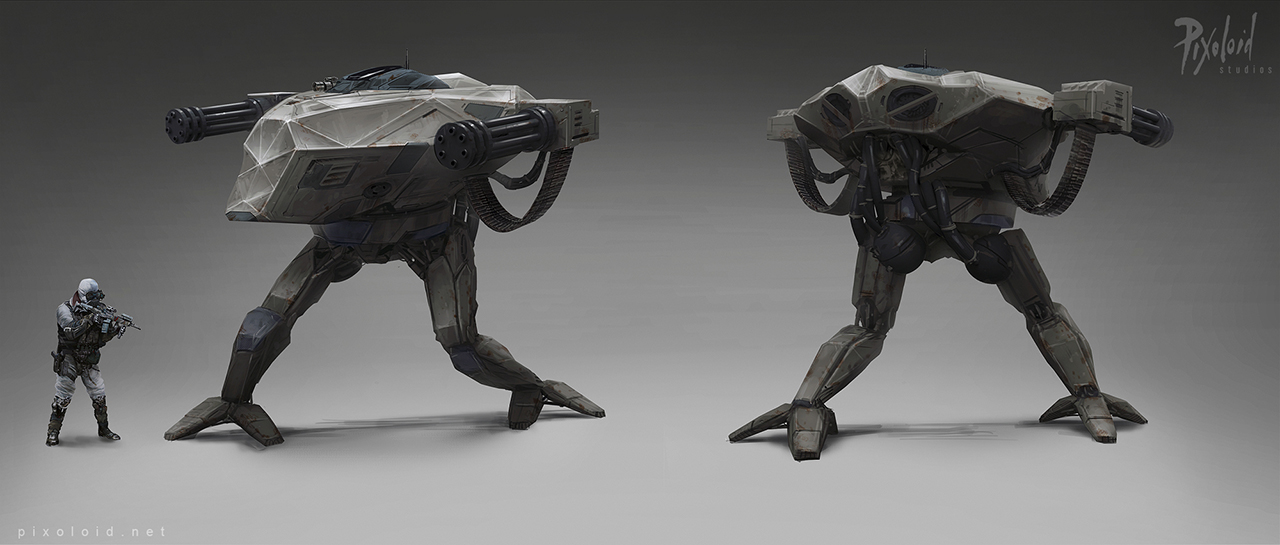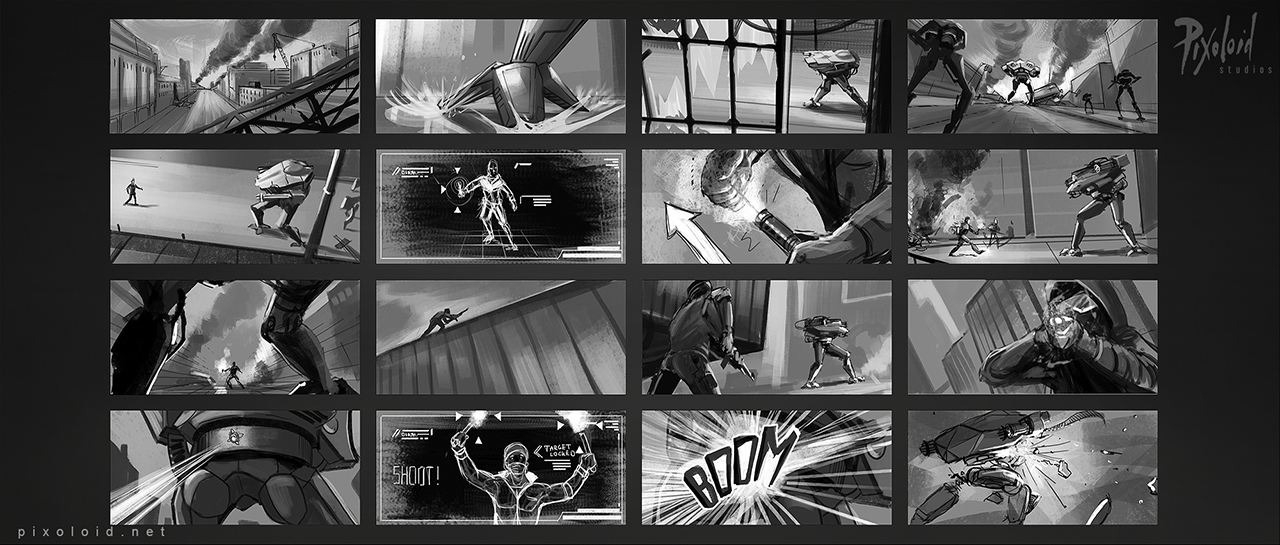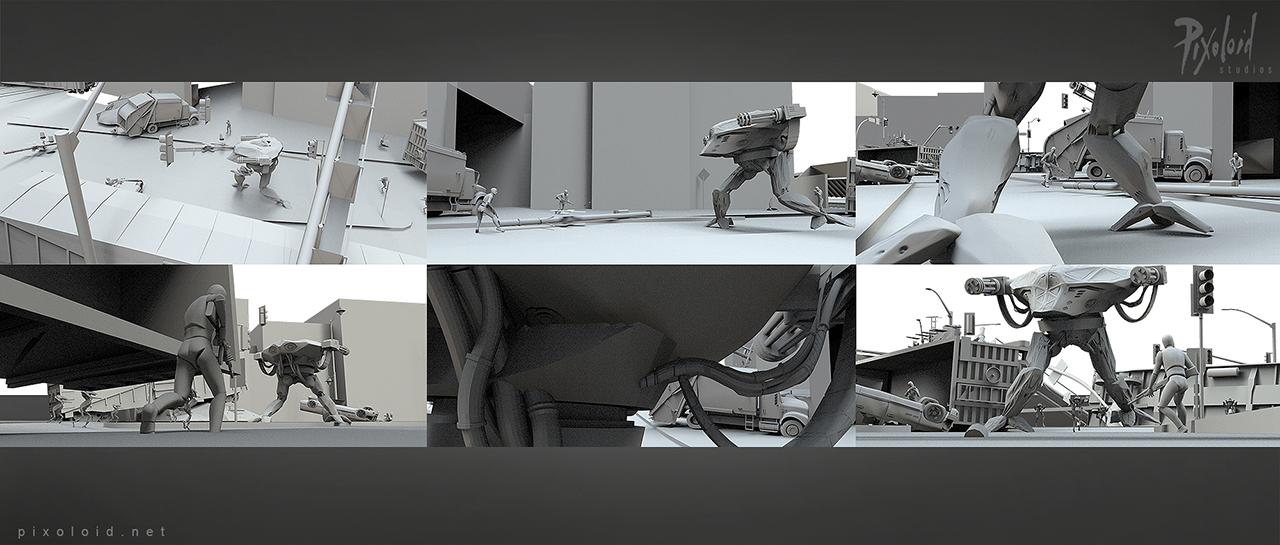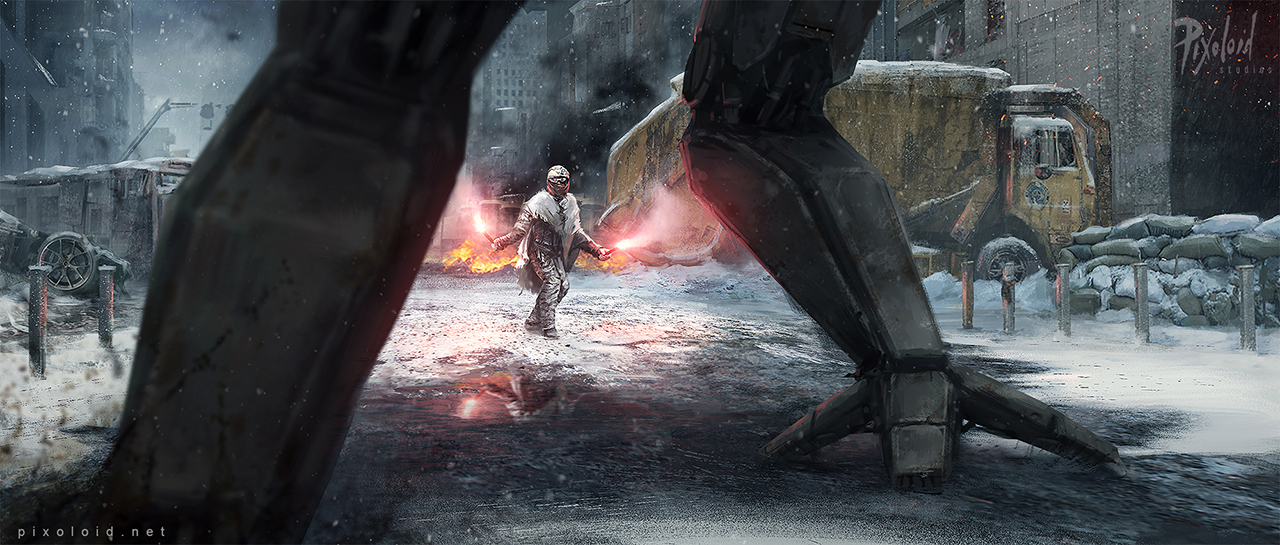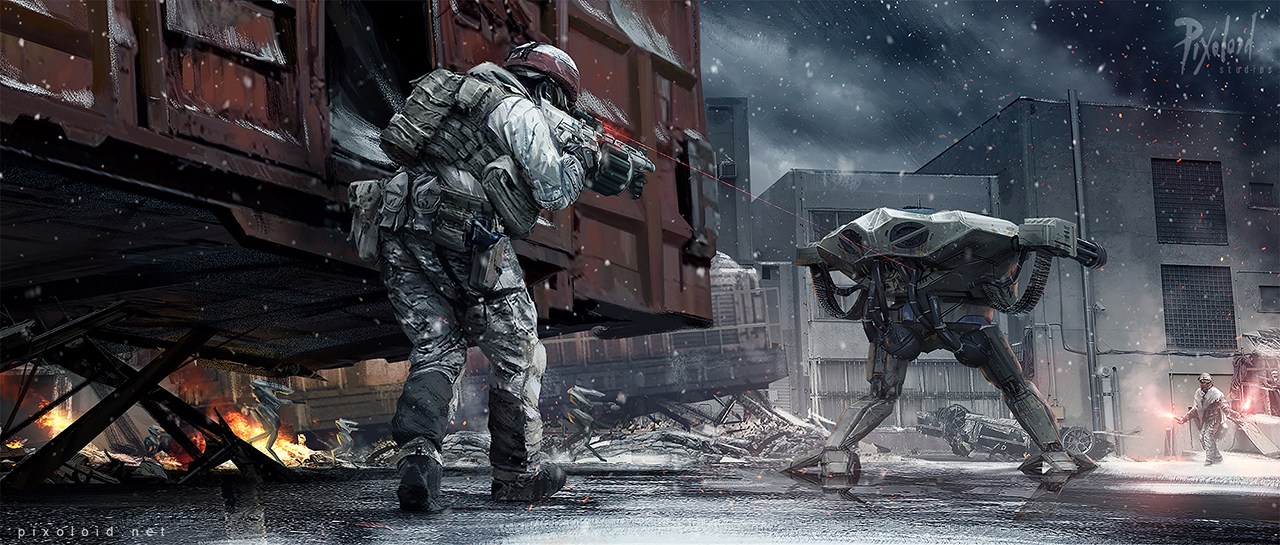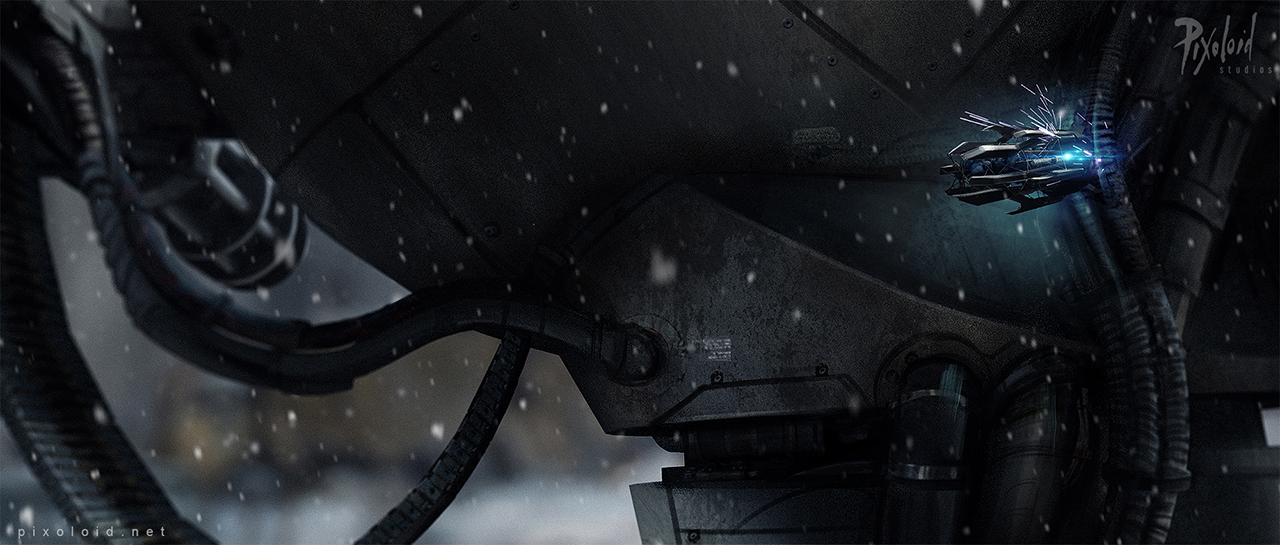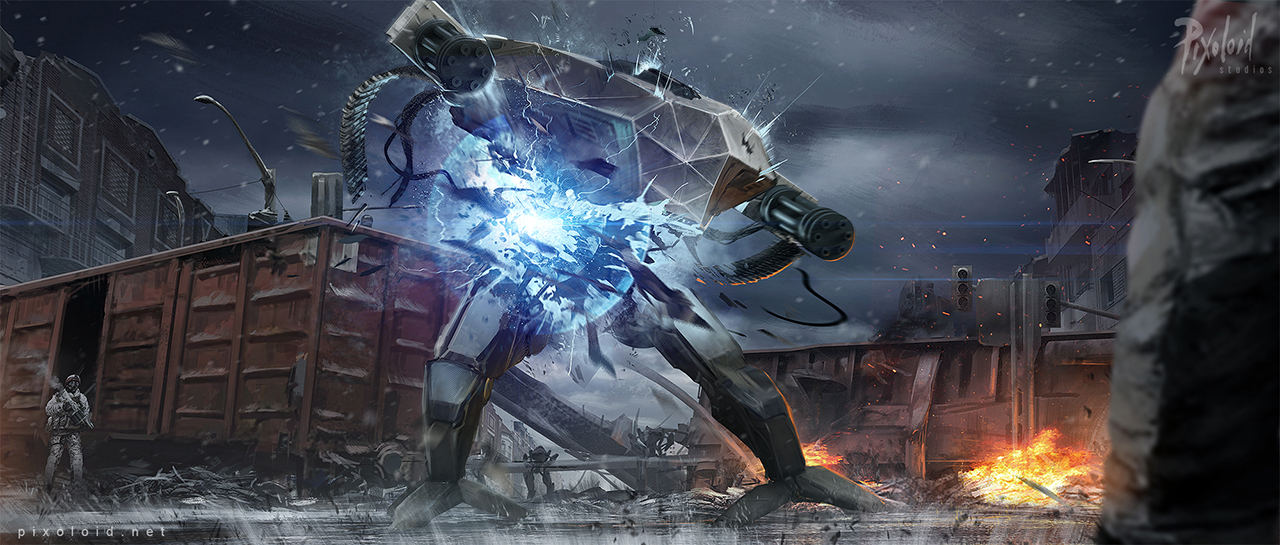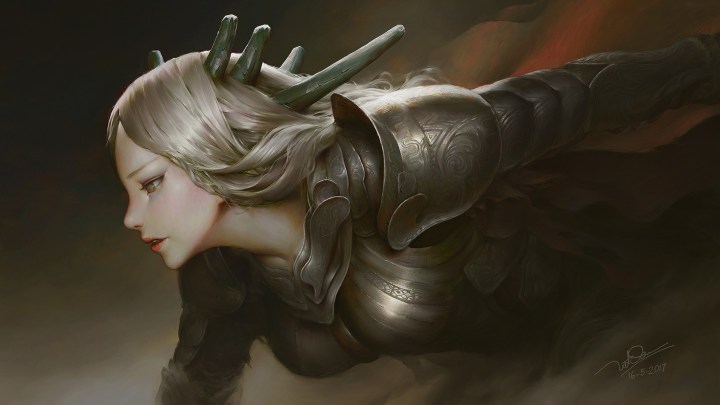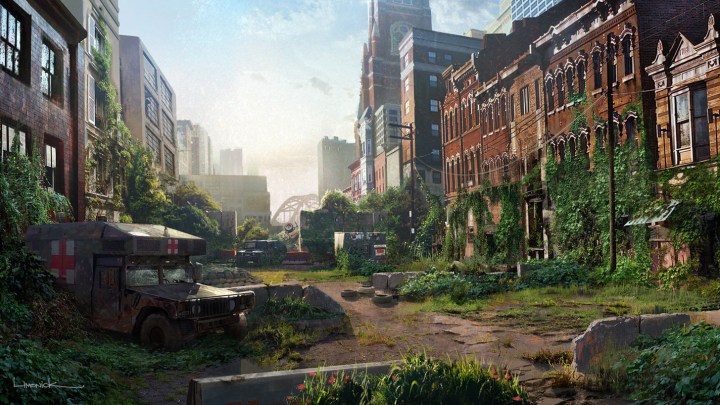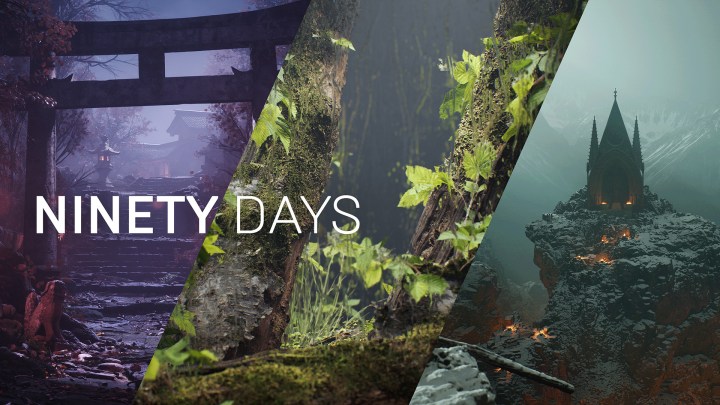Drone Ambush: How to Create Engaging Pitch Visuals
Pixoloid Studios works with directors and production designers to capture the essence of their film, game or animation project. Although they also help out in the production phase to expand an idea and provide the team with production ready artworks, the most creative work they are tasked with is the pitch development.
The pitch is a concise presentation of an idea for film, tv, animated series or video game, generally made in the hope of securing the financial background of a project. The visual side of a pitch should show the essence of the story and the potential of the world development. The key is to pick an iconic scene to provide the viewers with a glimpse into the main story and to design a cohesive world where the story takes place.
For example, consider Pixoloid’s project with Drone Ambush to guide you the process create pitch visuals. The plot was simple -a handful of rebel soldiers fight against military robot drones. At the end of the story, the rebels manage to blow up the enemy headquarters. The client wanted to depict the first appearance of the drone robots clashing with a small resistance group, the heroes, and how this group takes down a huge robot. With this information, Pixoloid created a little back story based on the first treatment they received.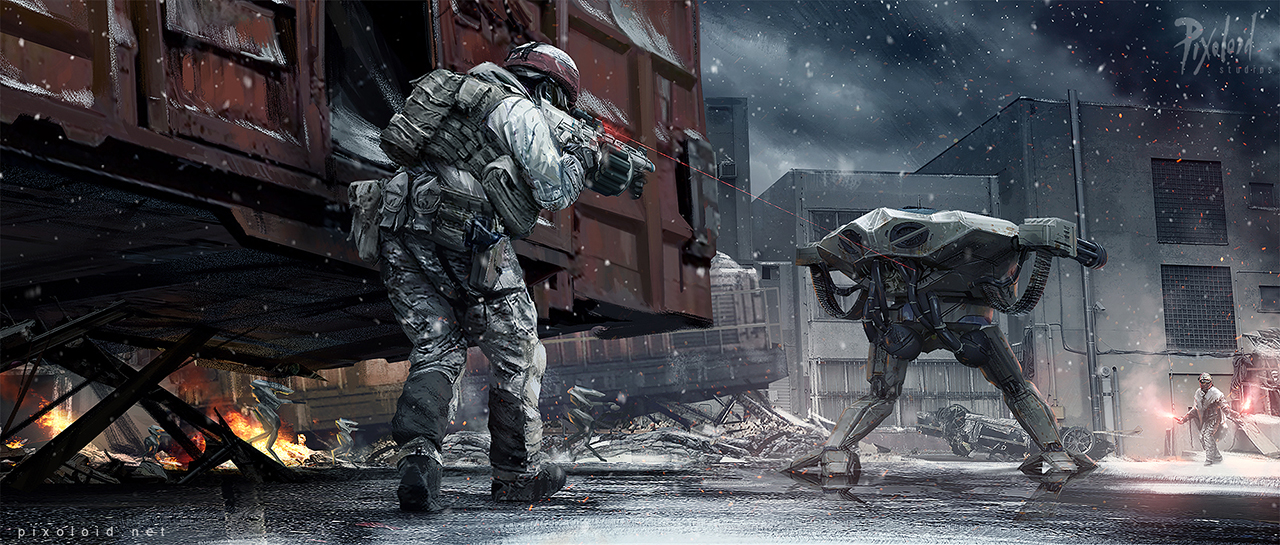
Based on the initial brief and gathering of some references, they began with the robot design. They wanted to have different types of drones and designed three major groups. The biggest walkers, who act like the brain of the unit, were controlled by humans from the headquarters, while the smaller walkers and their flying twins are AI controlled drones that follow and try to protect the “Big Daddy.”
As a first pass, a base model was created in Zbrush and 3dCoat as were some quick renders in KeyShot with some basic materials. Once the overall shapes were approved by the client, Pixoloid overpainted them in Photoshop to get to a detailed concept. This was both helpful for the presentation and were later used as primary references for the keyframes.
The second step was to design the other party. The client was very specific that no faces be drawn because producers have the tendency to attach them to certain characters (especially, if real actors are used to depict certain heroes or heroines in a concept). With the story taking place in the not-so-distant future, costume designs were grounded and not too far from present-day outfits. These soldiers probably would have scavenged the tech left from the war and used current day slightly modified weapons. Pixoloid also chose to set the story in a winter environment and designed white / winter camo gear for the soldiers. These choices enabled them to begin telling the story with characters and create a clear difference in design between the two factions.
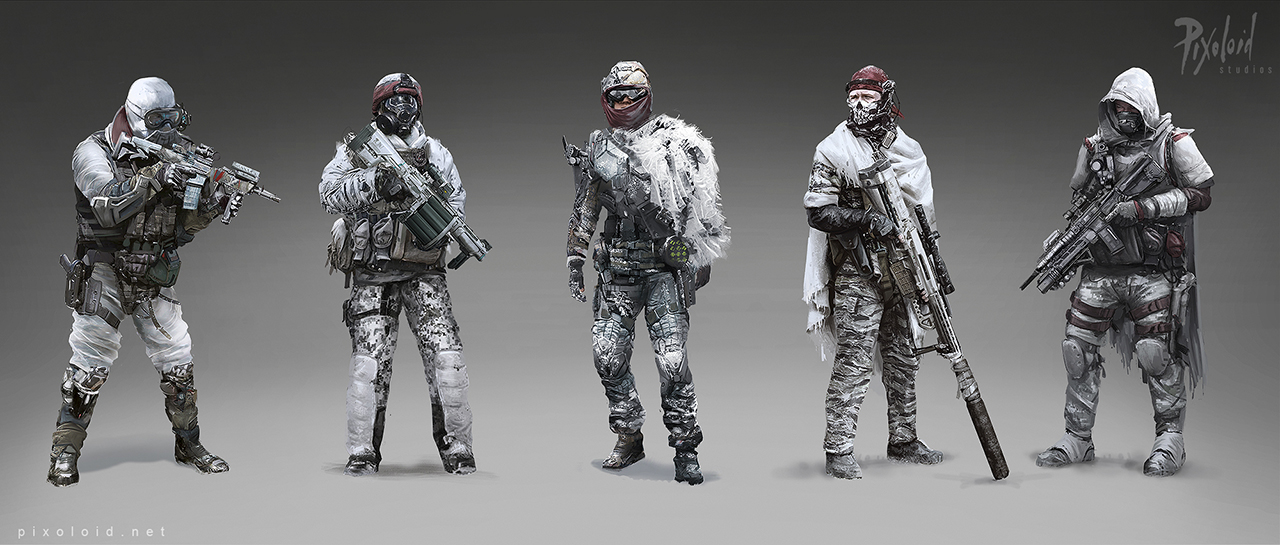
A rough storyboard was made to establish the flow followed by the creation of the 3D location layout. Engaging cinematic shots were done based on what they thought was best to communicate the story and visualize the world around it.
The area was built using SketchUp and the scene was assembled in KeyShot, where robot models and some posed placeholder soldiers were used for renders.
Key renders were sent to the client and together they selected the best renders to develop into keyframes.
They had four main elements that they wanted to keep in balance: the snowy and muddy environment (with the soldiers blending in), the robots, the desaturated natural overcast light and the highly saturated area lights of the fires. Using these elements, they produced various lighting scenarios and chose the most effective ones.
As the last step, they used all their concept designs, references and renders to create the detailed keyframes to tell the mini-story:
The resistance group sets huge fires to attract the drones. (That’s what the drones see the most with their heat cameras in the snow.) When the Big Daddy gets to the dead-end street, a man runs in front of it with lit flares to bring the attention towards him. When the robot switches focus, another soldier shoots an emp grenade onto its back and blows it up, so when the central brain unit is gone, the team can easily take down all the small drones.
“As you see, the key for creating a visual pitch is not necessarily about getting into all the minor details, but more about focusing on the most iconic elements of the story,” says Mark Molnar, Lead Concept Artist at Pixoloid.“You have to present these elements to show the promise of the world you would like to create through design, shape language, lighting, staging and mood. A successful pitch is where you feel you only see part of the whole and makes you want to know more at the end.”
If you need visuals for your pitch presentation or concept art for your next project, visit the Pixoloid website or get in touch with Mark for a personalized sample.
Pixoloid Studios is a concept design studio based in Budapest with a global client base in films, games, animation, publishing and advertising, offering a complete Visual Development pipeline in a wide variety of styles from realistic to stylised. It’s previous client’s includes NBC / Universal, Paramount, Sony, National Geographic and Netflix.
